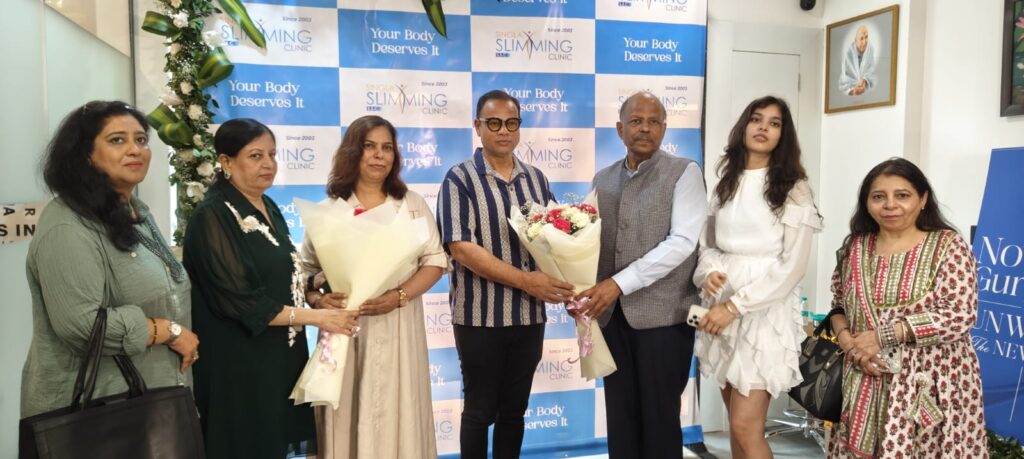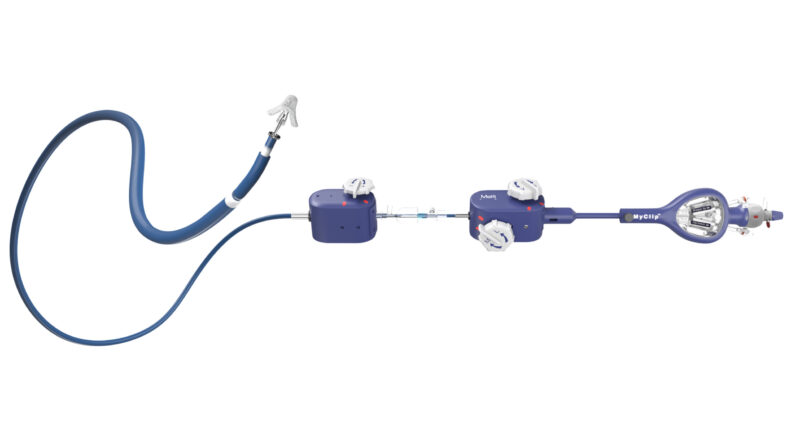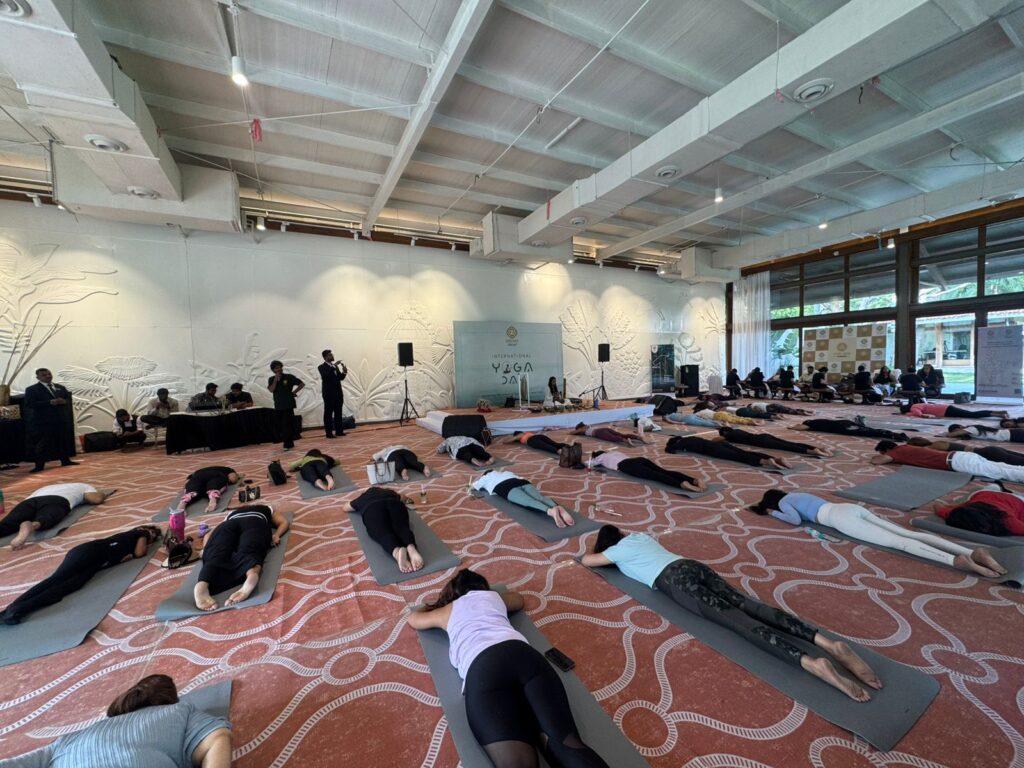- Dr. Sunitha Mahesh, Medical Director & Senior Consultant – Infertility and Maternal Fetal Medicine, Milann- The Fertility and Birthing Hospital, Bengaluru
Anemia is a major global health concern, particularly affecting women of childbearing age, with prevalence rates between 20–40%, translating to over 500 million individuals worldwide. It is especially significant during pregnancy, where it can lead to complications for both mother and baby. The primary cause is iron deficiency, responsible for over half of the cases. In India, the situation is particularly alarming, with the National Family Health Survey-5 (NFHS-5) reporting that approximately 52.5% of pregnant women are affected by anemia. Addressing this issue involves improving nutritional intake, promoting iron supplementation, and implementing public health strategies to reduce the burden of anemia globally and within specific populations like India.
Increased Requirement of Iron during pregnancy:
During pregnancy, there is an increased need for iron to support the developing fetus and to accommodate the mother’s expanding blood volume. Iron is essential for producing hemoglobin, the protein in red blood cells responsible for transporting oxygen throughout the body. Adequate iron intake ensures sufficient hemoglobin levels, which are critical for oxygen delivery to tissues and organs.
As pregnancy progresses into the second and third trimesters, the demands for iron and vitamins become even higher. If these increased nutritional needs are not met, it can lead to iron deficiency anemia. This condition occurs when iron intake falls short of the body’s requirements, resulting in fewer red blood cells and decreased oxygen transport. Managing iron intake through diet and supplementation is vital during pregnancy to prevent anemia and support the health of both mother and baby.
Challenges of anaemia during pregnancy
During pregnancy, there is an increase in blood volume—more than the increase in blood cells—leading to a condition known as hemodilution. This process helps ensure adequate blood flow to the developing fetus but can sometimes be mistaken for anemia. However, anemia in pregnancy is diagnosed when hemoglobin levels fall below 10.5 g/dL.
Anemia poses several risks for both mother and fetus. For the mother, low hemoglobin levels can cause symptoms such as fatigue, weakness, and difficulty performing daily activities. In severe cases, it may lead to breathlessness and cardiac issues. For the fetus, maternal anemia can result in restricted growth (growth restriction or IUGR), low birth weight, and may affect placental development. Poor placental function is linked to complications like pre-eclampsia and gestational diabetes. Managing anemia effectively during pregnancy is crucial to reduce these risks and ensure better outcomes for both mother and child.
New Evidence: Link to Congenital Heart Defects
A recent study published in the British Journal of Obstetrics and Gynaecology highlights an even more concerning association. Researchers analyzed health records of women in the UK who became pregnant between January 1998 and October 2020, and found that anemia during pregnancy was linked to a 40–47% higher risk of the child being born with congenital heart defects. This finding suggests that maternal anemia may interfere with early fetal cardiovascular development, adding another dimension to the importance of timely diagnosis and treatment.
Maternal Complications of Anemia
Anemia affects a pregnant woman’s health and resilience, particularly during labor and postpartum recovery. Key complications include:
· Fatigue and reduced physical capacity
· Increased susceptibility to infections, especially urinary tract infections (UTIs)
· Postpartum hemorrhage (PPH): Low hemoglobin levels reduce the body’s ability to tolerate blood loss, increasing the risk of severe bleeding during or after delivery
· Need for blood transfusion: To restore hemoglobin levels in cases of significant blood loss
· Abnormal blood clotting: Severe anemia and blood loss can trigger Disseminated Intravascular Coagulation (DIC), a life-threatening condition where the blood’s clotting ability becomes dysregulated
What Are Congenital Heart Defects (CHDs)?
Congenital Heart Defects (CHDs) are structural abnormalities of the heart that are present at birth. These defects can affect the heart’s walls, valves, or major blood vessels, disrupting normal blood flow through the heart and to the rest of the body.
CHDs range in severity:
· Mild cases may go unnoticed at birth and resolve on their own or require minimal treatment.
· Severe defects can be life-threatening and often require early surgical intervention or ongoing cardiac care.
CHDs: A Major Public Health Concern
· CHDs are among the leading causes of infant morbidity and mortality worldwide. According to data published in Indian Pediatrics, approximately 180,000–200,000 children are born with congenital heart disease each year in India alone. Unfortunately, a significant number of these cases remain undiagnosed or untreated, especially in rural and low-resource settings.
Risk Factors for Anemia During Pregnancy
Several pre-existing conditions and pregnancy-related factors can increase a woman’s risk of developing anemia during pregnancy. Identifying these early allows for timely intervention and better outcomes for both mother and baby.
Key Contributing Factors:
1. Hyperemesis Gravidarum
o Severe and persistent nausea and vomiting during pregnancy
o Leads to poor nutritional intake and dehydration, contributing to iron and folate deficiencies
2. Pre-existing Anemia
· Women with iron-deficiency anemia before conception are more likely to experience worsened anemia during pregnancy
· Often linked to poor dietary intake or chronic malnutrition
3, Congenital Hemoglobinopathies
· Conditions like thalassemia or sickle cell disease can cause chronic anemia, which may be exacerbated by pregnancy
4. Multiple Pregnancies
· Carrying twins or higher-order multiples increases demand for nutrients, especially iron and folic acid, heightening anemia risk
5. Short Interpregnancy Intervals
· A reduced gap between pregnancies can prevent the body from replenishing iron and nutrient stores, increasing susceptibility to anemia
6. Gynecological Conditions
o Women with heavy menstrual bleeding due to conditions like fibroids or endometriosis may begin pregnancy with already low iron stores
The Importance of Iron in Fetal Heart Development
Iron plays a crucial role in the early development of the fetal heart. During embryogenesis, the heart is the first functional organ to begin forming—starting as early as the 7th week of gestation.
On early ultrasound scans, this is often visualized as a faint pulsation, marking the onset of cardiac activity. However, the process of heart development begins even earlier and involves a highly coordinated sequence of events:
Key Stages of Fetal Heart Formation:
1. Formation of Primitive Blood Vessels
2. Cardiac Looping – where the heart tube folds into its basic shape
3. Septation – the formation of walls (septa) separating the heart chambers
4. Chamber Differentiation – development of the four-chambered structure seen after birth
These stages are highly sensitive to oxygen levels and nutrient availability, especially iron, which is vital for:
· Hemoglobin production (oxygen transport)
· Cell division and differentiation
· Mitochondrial energy metabolism needed for organ development
Impact of Maternal Anemia on Fetal Cardiac Development
When a pregnant woman is anemic, her blood carries less oxygen to the placenta and fetus. This hypoxic environment can interfere with the delicate processes involved in early heart formation, increasing the risk of congenital heart defects (CHDs) such as:
· Septal defects (holes in the heart walls)
· Outflow tract anomalies (malformations of the major vessels)
These defects can have lifelong implications for the child’s health and may require surgical correction or long-term cardiac care.
The Role of Nutrition in Maternal and Fetal Development
Maternal nutrition is one of the most critical factors influencing the health of both the mother and the developing fetus. Around the time of organogenesis—when vital organs like the heart, brain, spine, and kidneys begin forming—the need for adequate nutritional reserves becomes especially urgent.
Nutritional Needs During Organogenesis
Organogenesis typically occurs during the first trimester, a period during which many women may not yet realize they are pregnant. Key nutrients required during this time include:
· Iron – Essential for oxygen transport and cellular energy production
· Folic Acid (Vitamin B9) – Prevents neural tube defects and supports red blood cell production
· Vitamin B12 – Works with folic acid in red blood cell formation and neurological development
· Inadequate levels of these nutrients, particularly iron, can reduce the mother’s oxygen-carrying capacity, leading to fetal hypoxia (low oxygen delivery to tissues). This increases the risk of developmental abnormalities, especially congenital heart defects.
Causes of Anemia Beyond Diet
· While poor dietary intake is a common cause of anemia, there are several non-dietary causes that must also be addressed:
· Hemoglobinopathies such as:
o Thalassemia
o Sickle Cell Anemia
· These are inherited blood disorders where the structure or production of hemoglobin is abnormal, leading to chronic anemia.
Women with known or suspected hemoglobin disorders should be referred to a hematologist early in pregnancy (or ideally, before conception) to ensure appropriate monitoring and management.
The Fetal Dependence on Maternal Stores
The developing fetus is entirely dependent on the mother’s nutritional status, especially for:
· Iron – for building fetal blood supply and heart tissue
· Folic Acid – for neural development
· Vitamin B12 – for brain and nerve development
If the mother’s nutrient levels are low, the fetus may be at risk for:
· Low birth weight
· Preterm birth
· Congenital anomalies
· Long-term developmental delays
Preventing Anemia in Pregnancy: The Power of Nutrition and Prenatal Care
A nutritious, well-balanced diet during pregnancy is one of the most effective ways to prevent anemia and support both maternal and fetal health. Nutritional needs increase during this time, and iron becomes essential for building extra red blood cells to carry oxygen to the baby.
Iron-Rich Foods to Include in Your Diet
To reduce the risk of anemia, ensure your meals include iron-rich foods, such as:
· Green leafy vegetables (spinach, fenugreek,)
· Legumes and beans
· Fruits (especially dried fruits like dates, raisins, apricots)
· Meat and liver (excellent sources of heme iron)
· Fortified cereals and whole grains
· Milk (though not rich in iron, it’s a valuable part of a balanced diet)
Don’t Forget Vitamin C
· Vitamin C is crucial for enhancing iron absorption from plant-based foods. Include:
· Citrus fruits (oranges, lemons)
· Tomatoes
· Bell peppers
· Berries and guavas
Prenatal Vitamins Are Essential
In addition to food, prenatal vitamins prescribed by your healthcare provider supply important nutrients like:
· Iron
· Folic acid
· Vitamin B12
These supplements help build up maternal stores and support the baby’s development, especially when dietary intake is not enough.
Antenatal Check-Ups: Early Detection Saves Lives
Regular antenatal (prenatal) check-ups are critical. Your doctor can:
· Monitor your hemoglobin levels
· Identify signs and symptoms of anemia early
· Order tests if needed (e.g., iron studies, screening for thalassemia or sickle cell disease)
· Recommend appropriate dietary adjustments, iron supplements, or specialist referral
Conclusion
Anemia during pregnancy should not be seen as a minor nutritional issue. It is a systemic condition with far-reaching consequences and preventing anemia is a shared responsibility—of the mother, the healthcare provider, and the health system. A proactive approach that combines nutritional care, supplementation, and regular medical check-ups ensures better outcomes for both mother and baby.






